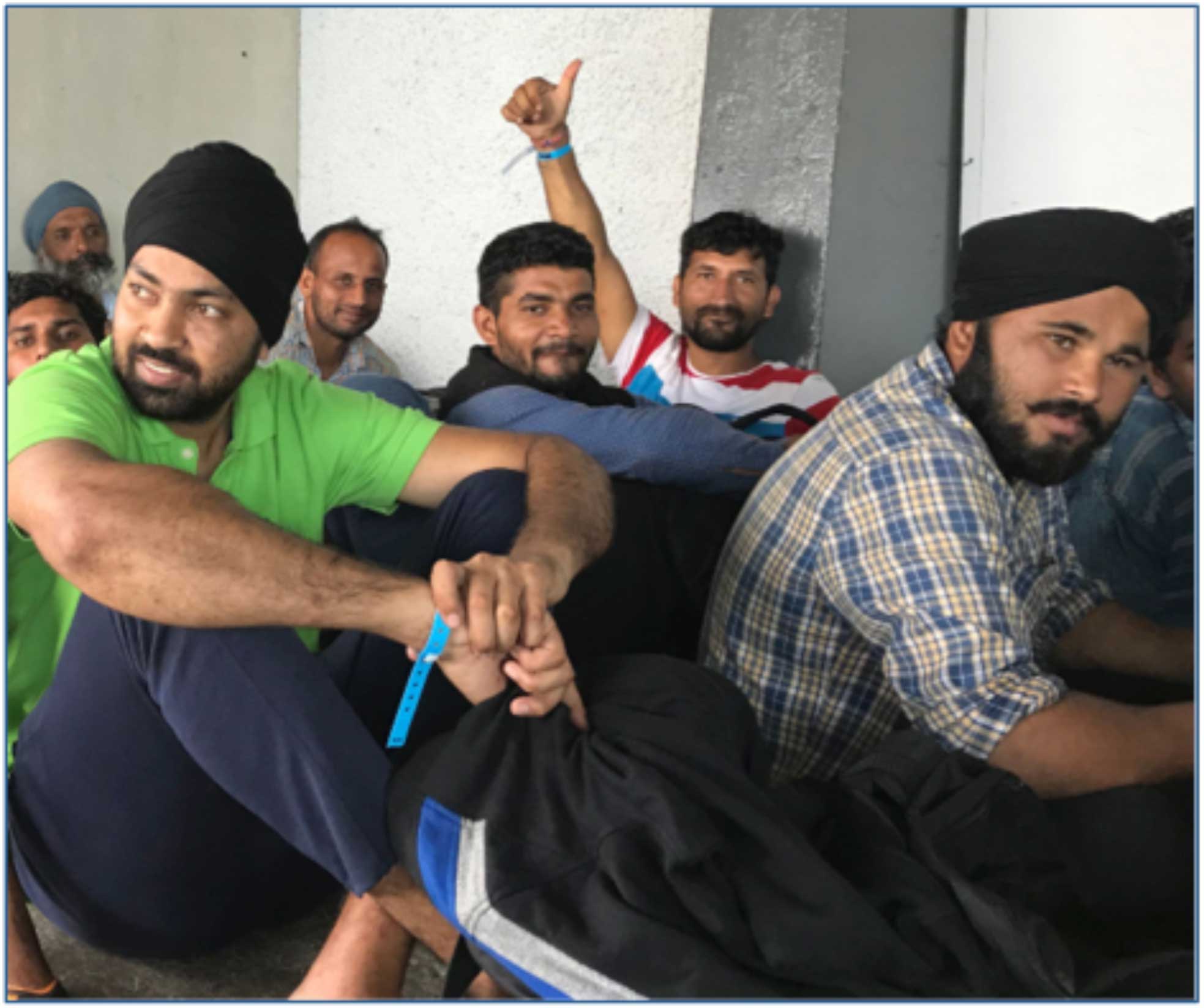
Indian nationals migrating through Costa Rica toward the U.S. southern border in December 2018. Photo by Todd Bensman
Presidents and Congress can pull levers and push buttons all they want on legal immigration, opening and closing spigots on visas like the H-1B and H-2B used to import cheaper workers from abroad.
But the dirty little secret is that any nationality or visa category a president might choose to restrict always has a viable end-run option readily at their disposal: illegal entry through the U.S. southwest border, where visa-denied migrants simply defraud America's asylum system and get in permanently anyway.
A few of us at CIS have reported how migrants dodge official rules to achieve the American Dream anyway, with a border crossing and asylum claim, with little permanent reform resulting. But maybe the policy- and law-maker set on both sides of the aisle will listen to NPR reporter Lauren Frayer. She published a report July 9 that is rather remarkable in that it lays bare for a broad listening (and reading) audience exactly how thousands of Indian migrants, all largely coming for jobs and lifestyle, game the asylum system by posing as persecuted torture victims at the border.
For her piece titled "The Long, Perilous Route Thousands of Indians Have Risked For A shot At Life in U.S.", Frayer traveled to India and interviewed deported migrants and aspiring migrants, as well as Indian and U.S. officials, triangulating how it all works from the inside.
It helps first to understand that Indians make up one of the largest "extra-continental" nationality groups apprehended at the southern border every year, especially in recent years, which is why Frayer reported the story. In 2018, Border Patrol agents apprehended approximately 8,997 Indians. Last year, 7,675 were caught. In total, the Border Patrol has apprehended more than 32,000 Indian nationals at the southern border between 2009 and 2019, CBP apprehension data shows.
CIS readers should take stock of Frayer's report on their own. But key takeaways follow:
- Most of the migrants hail from one of India's wealthiest states, Punjab, and can afford the steep smuggling fees necessary to improve their lifestyles even more in America. Few, if any, are likely fleeing violence, persecution, or even true economic hardship.
- The migrants come through Mexico because they don't have the education or credentials to qualify for U.S. visas and know they can easily get U.S. asylum once they reach the southern border. How?
- A "burgeoning crop of unregulated travel agents — human smugglers" charge the migrants tens of thousands of dollars per person, route them through as many as a dozen countries to the U.S. border, and "often supply the migrants with fake backstories to help them try to win asylum." (Emphasis added.)
- Most of the migrants face no "credible fear" threat of persecution, which is the first hurdle for U.S. asylum officers to permit then to proceed with claims.
- One Sikh migrant, Sevak Singh, described how he decided to lie to U.S. asylum officers that he had been persecuted based on his religion even though he had suffered no such thing. Singh told NPR he has not been persecuted in India and was merely poor and dreamed of "improving my family's finances". He recalled how, along the migration trail, "fellow Sikhs would rehearse fake backstories about Sikh separatism and persecution. The stories were untrue but were rooted in decades-old strife," NPR reported.
- Frayer interviewed four other deported migrants in India who "called themselves economic migrants — not asylum-seekers".
- After years of prior administrations ignoring known fraud by Indians, the Trump administration in April 2019 ordered new India-specific training for asylum officers responsible for "credible fear" decisions. In the six months prior to that training, credible fear was found in 89 percent of Indian nationals evaluated by asylum officers. After the new training, the rate dropped to 17 percent through February 2020. (Very few asylum claims are being permitted at the southern border right now because of Covid-related public health rules, but that's a temporary situation.)
- The Trump administration is now starting to deport significant numbers of Indians rejected for asylum claims and Mexico is doing so as well, for the first time in memory. As a predictable result, Indians are trying for asylum in Europe and Canada instead of the United States.
This latest development seems like a good-news story on the asylum-fraud front. Most Americans wouldn't want to see the asylum system abused on an industrial scale like this.
But nothing in immigration law or policy is permanent, and a presidential election looms. Hopefully, the Democratic nominee, who plans to systematically reverse all Trump immigration policies, listens to NPR.
